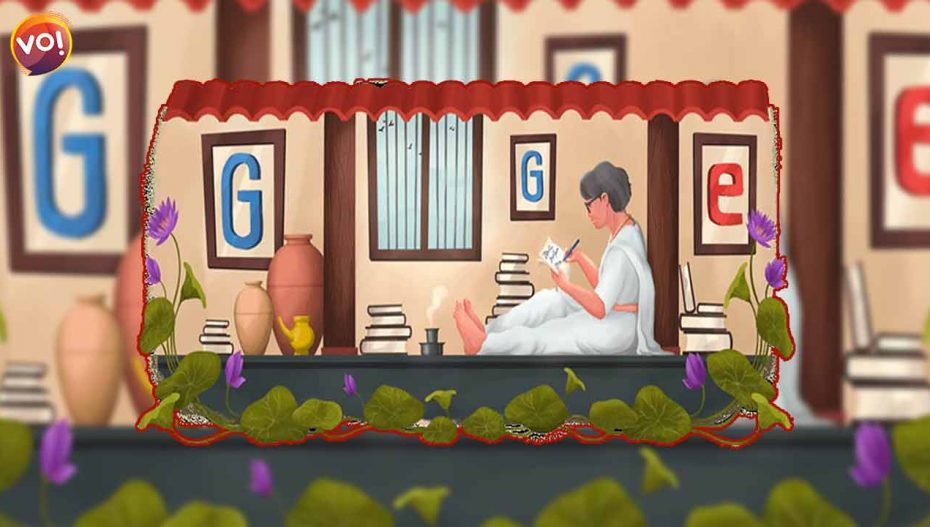Celebrating the 113th birth anniversary of famous Malayalam poet Balamani Amma, Google illustrated a Doodle by Kerela-based artist Devika Ramachandran. The Doodle showcases Balamani Amma composing a poem and sitting by a window, with several books around her.
Balamani published more than twenty anthologies of prose, translations, and poetry. She received many accolades, including Padma Vibhushan, India’s second-highest civilian honour, and Saraswati Samman, India’s most esteemed literary award.
Born 19 July 1909, Amma was called the Grandmother of Malayalam literature. With her ancestral home in Nalapat, Punnayurkulam in Kerela’s Thrissur district, she never received formal training or education.
She got home-schooled through her uncle Nalappat Narayana Menon, a well-known Malayali poet. Menon had an exceptional collection of works and books that Balamani started studying from a young age.
Amma married at 19 to V.M. Nair, the managing director and managing director of Mathrubhumi, a Malayalam newspaper.
At age 21, in 1930, she published Kooppukai, her first poem. Her credit came as a gifted poet from the former ruler of the Kingdom of Cochin, Parikshit Thampuran, awarding her with the Sahithya Nipuna Puraskaram.
The Google Doodle
Google, in a tribute, said in its blog post, “As an avid reader of Indian mythology, Amma’s poetry turned a spin on the traditional understanding of women characters. Her early poems glorified motherhood in a new light—she became known as the ‘poetess of motherhood’.”
“Her works adopted the ideas and stories of mythological characters. Depicting women as influential figures who remained ordinary human beings,” the post added.
Her poems expressing her love for her grandchildren and children attained the titles of Amma (Mother) and Muthassi (Grandmother) of Malayalam poetry.
Balamani was the mother of Kamala Das, a nominee for the Nobel Prize in literature in 1984. In 2004 Amma passed away, with full state honours attending her funeral. Her most famous work includes Amma (1934), Muthassi (1962) and Mazhuvinte Katha (1966).
Read also: Famous Top 10 Indian Paintings; From Tagore to Hussain











